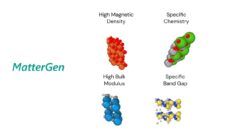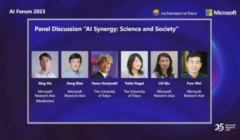AI Case Studies for Natural Science Research with Bonnie Kruft
Generative AI is unlocking new research tools for bold scientific discoveries. We sort through the hype and take a deep dive into some practical examples of groundbreaking research enabled by generative AI such as small molecular inhibitors for treating infectious disease and the discovery of new materials for energy storage. As researchers reduce the discovery time from years to months, how are they ensuring that safe and responsible practices are used to instill public trust in the process?
0:23 (opens in new tab) Scientific discovery is the most important use of AI
1:23 (opens in new tab) What Large Language Models bring to science
2:06 (opens in new tab) What makes scientific discovery different?
3:40 (opens in new tab) Prior knowledge
6:19 (opens in new tab) “No-free-lunch theorem”
9:16 (opens in new tab) Generative AI model MatterGen
9:55 (opens in new tab) Drug discovery and deep learning
14:12 (opens in new tab) Large Language Models v other training models
15:40 (opens in new tab) The evolution of generative AI models
16:37 (opens in new tab) How generative AI models can assist scientists
19:08 (opens in new tab) The role of AI in drug development
22:35 (opens in new tab) How Large Language Models can work with science-based models
26:00 (opens in new tab) Looking ahead for AI in science
- Date:
- Speakers:
- Bonnie Kruft
- Affiliation:
- Microsoft Research AI4Science
-
-

Bonnie Kruft
Partner Deputy Director
-
-










